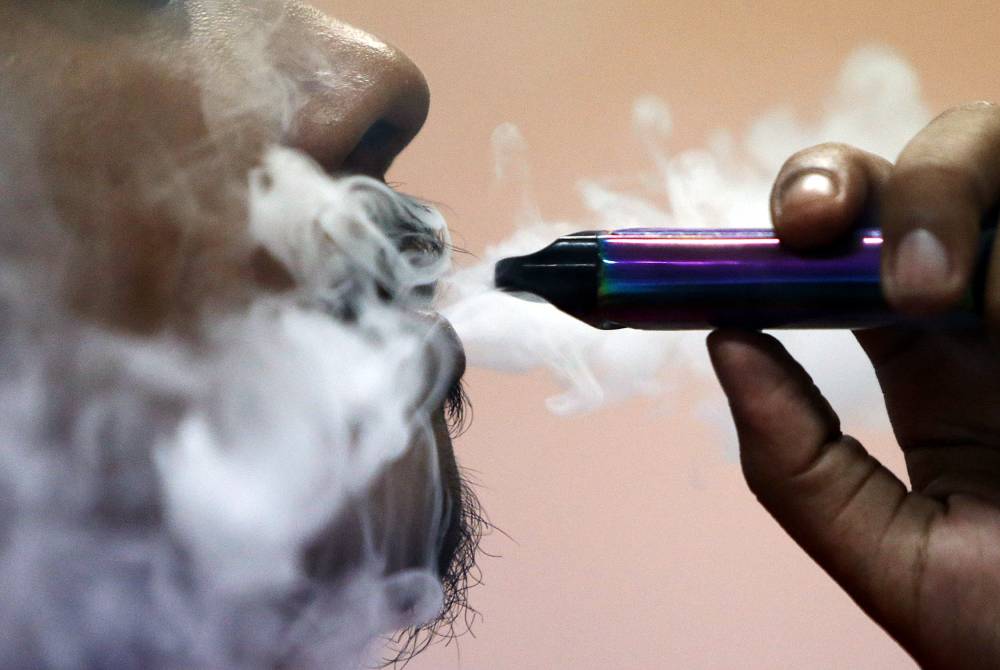Not a cure but a curse

The advent of electronic cigarettes and vaping products in the mid-2000s stirred hope among smokers of regular cigarettes that they had finally found their holy grail—a safe substitute for the object of their addiction.
Soon, e-cigarettes were touted as an instrument to curb tobacco consumption, the No. 1 cause of lung cancer around the globe, and manufacturers capitalized on such imagined benefits in marketing the novel products to teens and young adults, with great success.
Alas, science has begun to dash those initial expectations, as it now appears e-cigarettes and vapes are far from being the panacea for tobacco use after all, but a unique curse of its own.
Today, the Philippines stands on the cusp of a vaping epidemic, based on results of the Global Youth Tobacco Survey in 2019. About one in seven Filipinos between the ages of 13 and 15 were found to be taking e-cigarettes, equivalent to almost a million young users. In the same year, the Expanded National Nutrition Survey by the Food and Nutrition Research Institute showed that one in five vape users in the country, or 20 percent, were adolescents.
Graphic health warnings
But those surveys were from half a decade ago, a period marked by the robust growth of the local vaping community, which continued to attract legions of enthusiasts. Thus, the Department of Health (DOH) believes the numbers might have “grown even larger” over the past five years.
As vaping boomed, Congress passed Republic Act No. 11900, or the Vaporized Nicotine and Non-Nicotine Products Regulation Act, which lapsed into law on July 25, 2022.
Although considered “one of the most well-studied pieces of legislation,” the law “not only legitimizes the use of vaping products but also lowers the age at which these can be accessed (i.e., from 21 to 18 years old),” noted an April 2023 journal article by scholars Lance Sese and Ma. Celina Guillermo.
But the more crucial change, according to the study, was the transfer of regulatory power over e-cigarettes from the DOH, via the Food and Drug Administration (FDA), to the Department of Trade and Industry (DTI), meaning that, from a tightly regulated medicinal product, vapes became just another consumer good.
The FDA, however, retained jurisdiction over “medicinal or therapeutic claims” with the power to authorize “reduced risk statements” on marketing materials. Beginning May 12, all e-cigarette products sold in the country will feature graphic health warnings (GHWs) on at least 50 percent of the packaging. The hope is to replicate the success of GHWs in cigarette packaging in lowering tobacco use.
Toxic substances
Newly released templates of GHWs show some of the immediate and long-term effects of vaping: dry, itchy red eyes; a dry mouth with lesions due to vaping juices; a damaged and scarred lung; a bloodied and mangled hand caused by accidental explosion; and a bedridden patient wearing an oxygen mask.
The message: vape products are fraught with danger, despite claims to the contrary.
“Evidence reveals that these products are harmful to health and are not safe. However, it is too early to provide a clear answer on the long-term impact of using them or being exposed to them,” according to the World Health Organization (WHO), which has expressed alarm at the rise of vape use among young people.
“While long-term health effects are not fully known, we do know that they generate toxic substances, some of which are known to cause cancer and some that increase the risk of heart and lung disorders,” it said. Other hazards include burns from explosions or malfunctions and children accidentally ingesting poisonous e-liquid.
The other touted benefit—that it could lower tobacco use—has been thoroughly debunked, as the WHO has found that e-cigarettes “have not been proven to be effective” for the cessation of smoking at the population level. Epidemiology studies, in fact, “consistently demonstrate that e-cigarette use increases conventional cigarette uptake, particularly among non-smoking youth, by nearly three times.”
Health education
Besides GHWs, other guidelines inscribed in RA 11900 restrict sales and promotion of such products near schools and spots frequented by children, require proof of age in purchases, and ban their use in public spaces, except designated areas.
But are these enough?
A vital element that seems lacking or absent in the campaign is health education, one that especially addresses social media disinformation depicting these products as not only free of risk but fashionable. Further research on vape use is also in order to give policymakers a broader picture of the health crisis in the making.
There’s wisdom, then, in the call of Child Rights Network and Parents Against Vape to involve the Department of Education and Commission on Higher Education in the cause of the DOH, FDA, and DTI “to strengthen advocacy efforts” against vape products. A “whole village” approach will go a long way toward helping our youth kick this nasty habit.

















